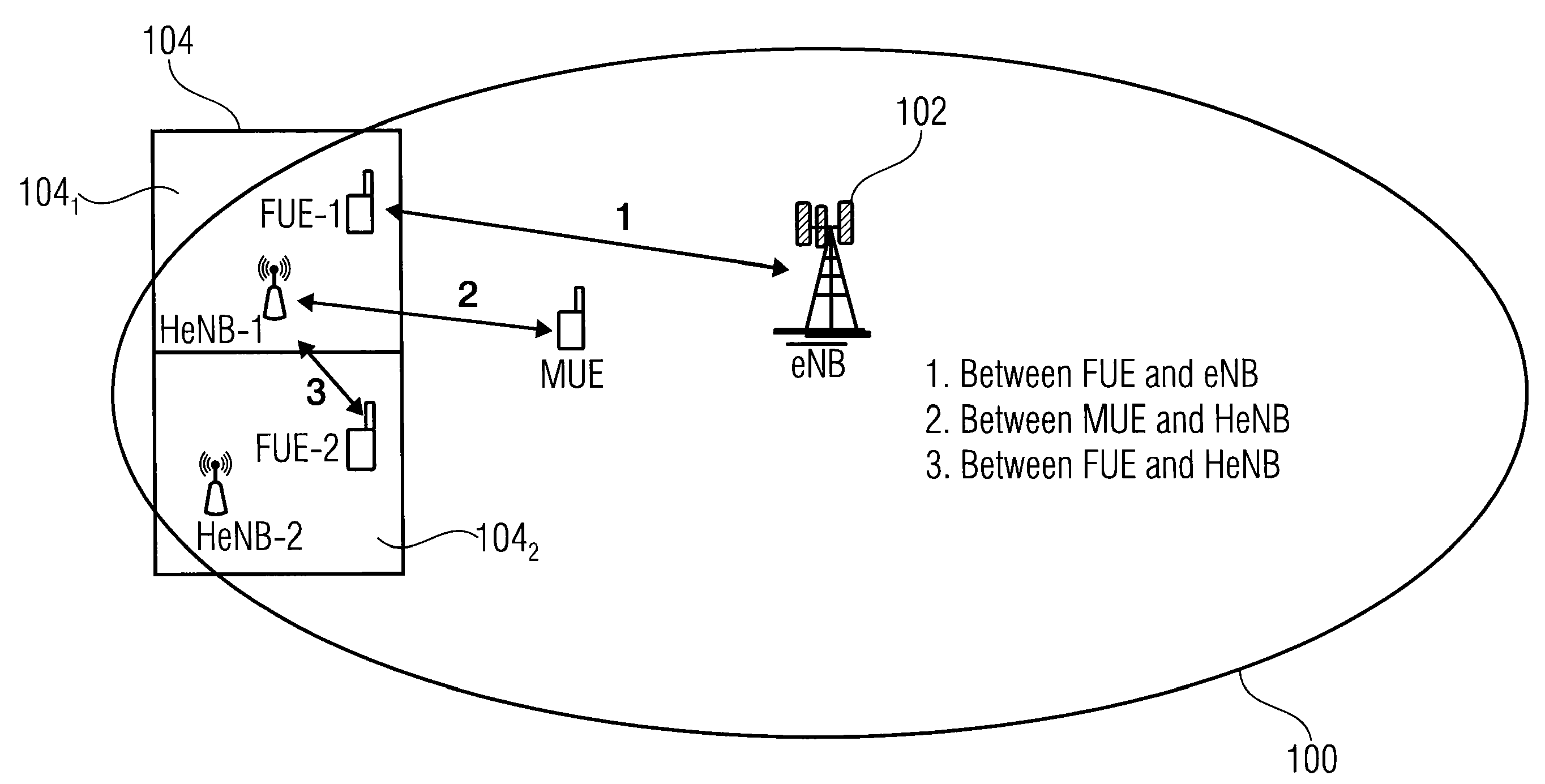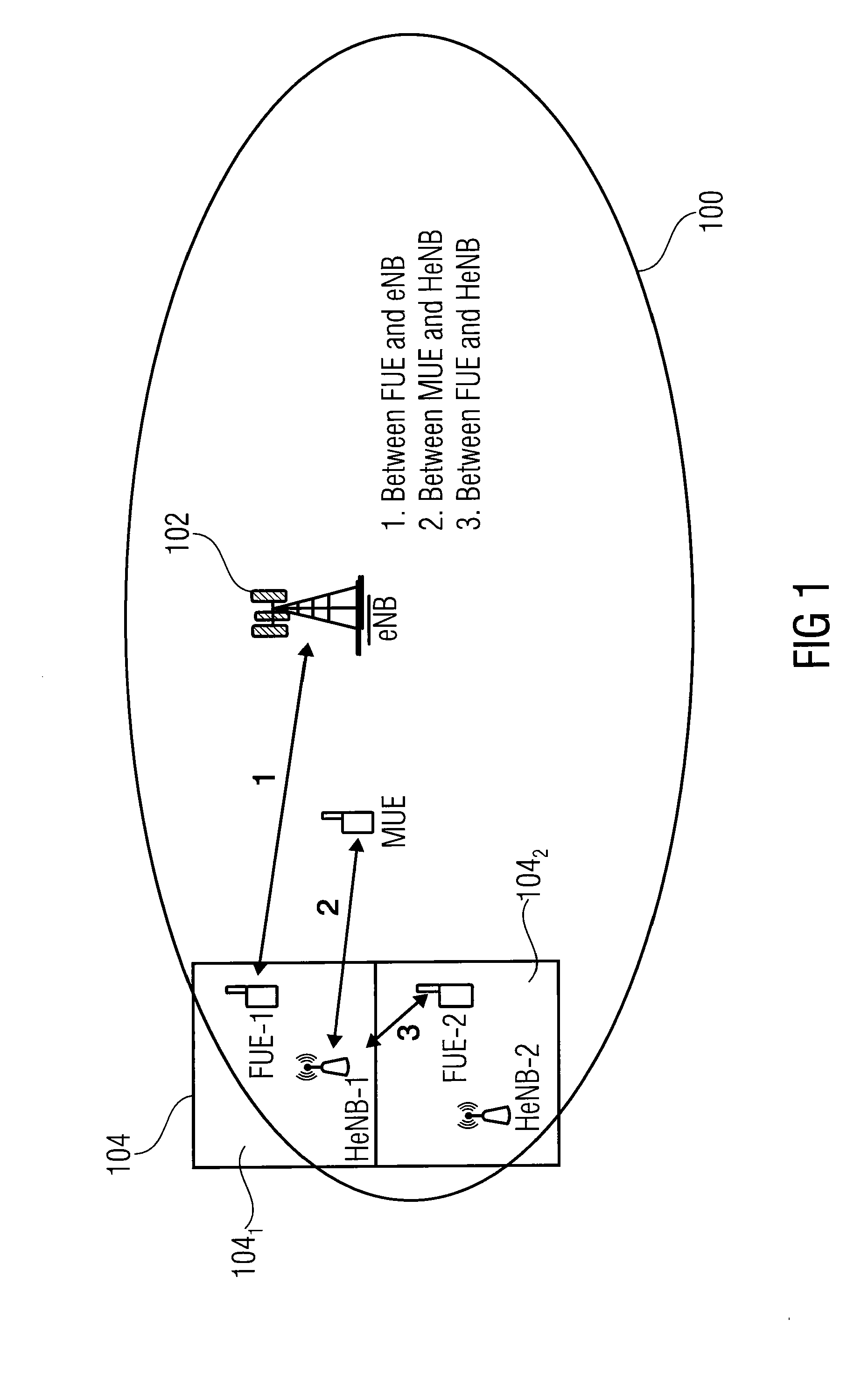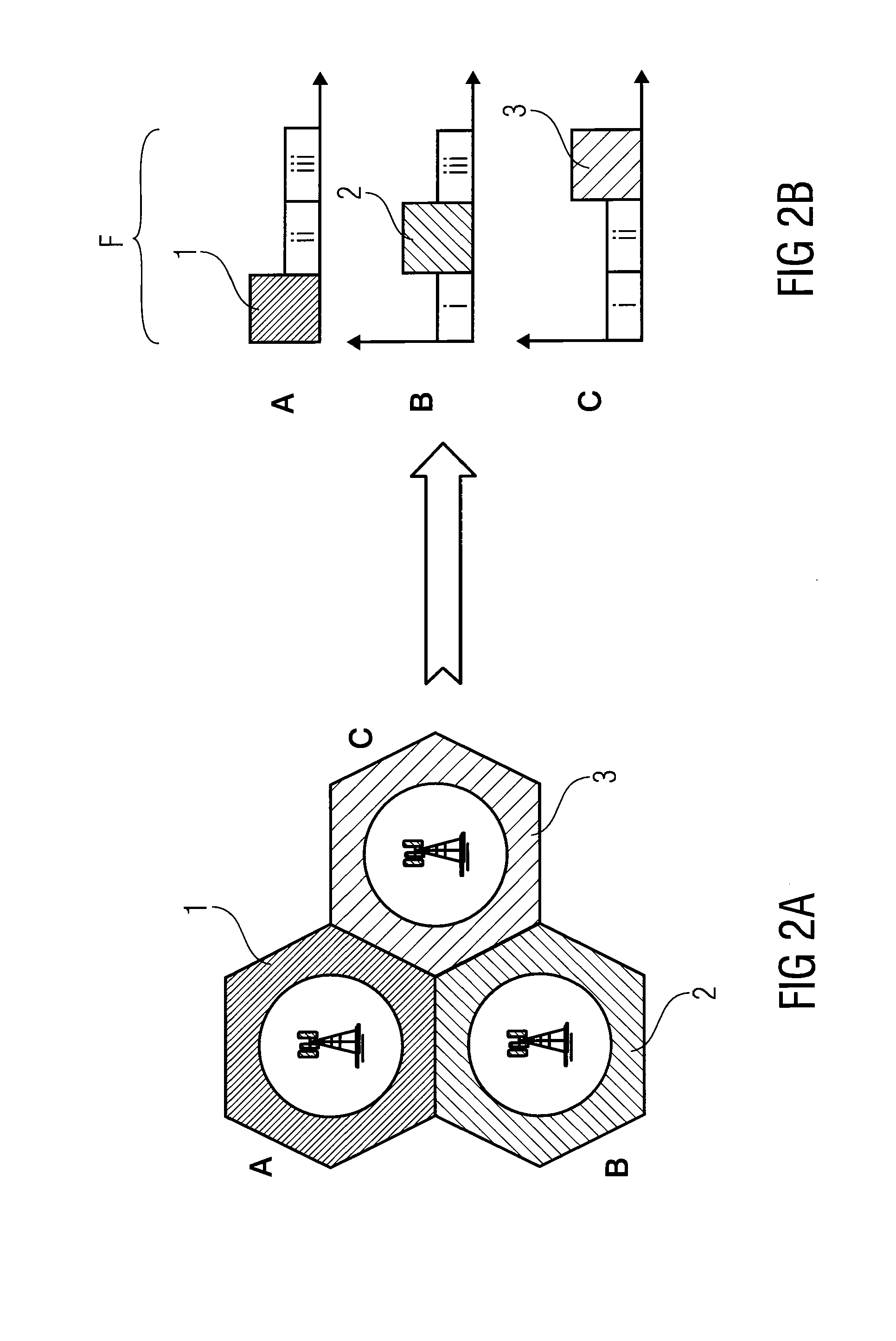Method for assigning frequency subbands to a plurality of interfering nodes in a wireless communication network, controller for a wireless communication network and wireless communication network
a wireless communication network and interfering node technology, applied in the field of wireless communication networks, can solve the problems of increasing data traffic, mobile operators facing difficulties in satisfying users' demands, and deployment of femtocells, so as to increase resource utilization efficiency, increase efficiency and throughput, the effect of high subband usage efficiency
- Summary
- Abstract
- Description
- Claims
- Application Information
AI Technical Summary
Benefits of technology
Problems solved by technology
Method used
Image
Examples
Embodiment Construction
[0068]Embodiments of the invention are now described in further detail on the basis of a model as it is described by 3GPP. “Simulation Assumptions and Parameters for FDD HeNB RF Requirements,” 3GPP TSG RAN WG4 R4-092042, May 2009 from www.3gpp.org / ftp / Specs / . A femtocell network which is based upon 3 GPP long term evolution (LTE) with a 5×5 grid model is considered in the just mentioned publication. This is a dense HeNB modeling for an urban deployment. In this model, a single floor building with 25 apartments, each having 10 m×10 m size is used. A central controller, which can be the HeNB gateway (HeNB-GW) controls all femtocells of the network. FIG. 5 shows the 5×5 grid model where HeNBs are indicated by Δ and UEs are indicated by O. There is a maximum of one femtocell at each apartment with a probability of p. If a femtocell is placed in an apartment, it is assumed to be active and to serve only one mobile which is also located in the same apartment. FIG. 5 shows an example deplo...
PUM
 Login to View More
Login to View More Abstract
Description
Claims
Application Information
 Login to View More
Login to View More - R&D
- Intellectual Property
- Life Sciences
- Materials
- Tech Scout
- Unparalleled Data Quality
- Higher Quality Content
- 60% Fewer Hallucinations
Browse by: Latest US Patents, China's latest patents, Technical Efficacy Thesaurus, Application Domain, Technology Topic, Popular Technical Reports.
© 2025 PatSnap. All rights reserved.Legal|Privacy policy|Modern Slavery Act Transparency Statement|Sitemap|About US| Contact US: help@patsnap.com



